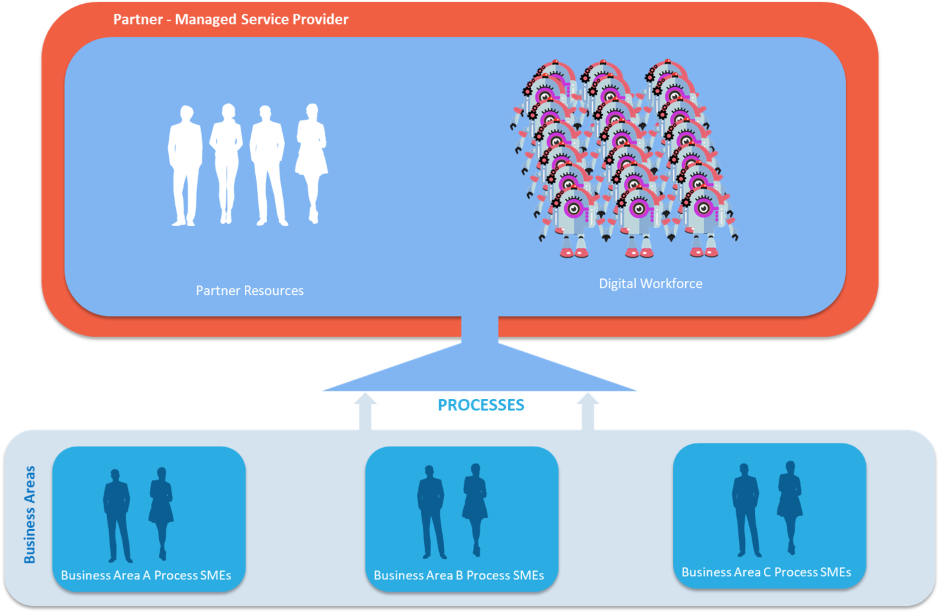Organizational Model: Outsourced Managed Service
In this example model, the outsourced managed service is a centralized capability delivered by a third-party that is responsible for automated projects from pipeline to deployment and run.
This model provides organizations with a fast route to deployment as experienced partners provide an end-to-end RPA service. The approach is similar to outsourcing processes for execution, but in this case the work is performed by a Digital Workforce and not human workers.

How do processes flow through the organization?
Each Business Area within the customer provides automation opportunities to the Managed Service Provider (or MSP) to deliver. The Customer works with the MSP to define and test processes. The Customer submits change requests and incidents as and when required.
The MSP is responsible for: Process discovery and definition and solution design documentation; the build, test, release, and ongoing support of the process, as well as the overall governance of the program.
Project delivery teams from the MSP work with the customer's Process SMEs to define and test automation builds. Once automated, the processes are managed by the MSP but still owned by the Business Area of the Customer.
It is important to note than in this model it is possible to delegate elements of process discovery to the business areas to reduce cost payable to the MSP. This will differ depending on the delivery lifecycle and the agreement with the MSP but could include – Process discovery, process definition and testing
Benefits
- Fast deployment
- Ability to scale as and when required without the people overhead
- Ensures delivered projects will be supported post-deployment
- 24/7/365 monitoring and support is possible
- Platform is managed, maintained and updated with minimal overhead
Challenges
- Long-term cost potentially higher than in-house approach
- Process pipeline may be more difficult to build
- Process ownership becomes more abstract and cultural adoption more difficult
- Change requests may be slow and lack the agility the business needs
- Initial security challenges and potential access control issues need to be considered early
- Process knowledge of how the business operates may be lacking in the early automation which could lead to delays in implementation
Blue Prism’s Success Accelerator program combines various levels of mentorship and access to our Expert Services, Technology Ecosystem and Certified Partners based on the size and maturity of your digital workforce operations.